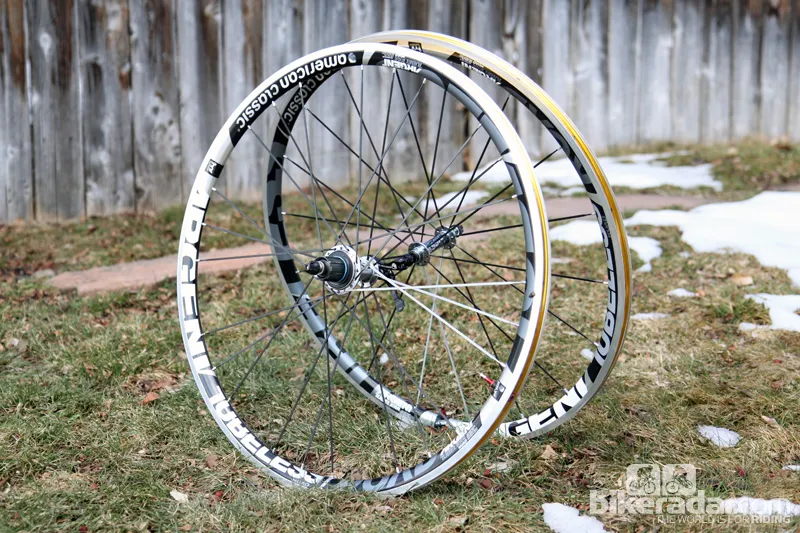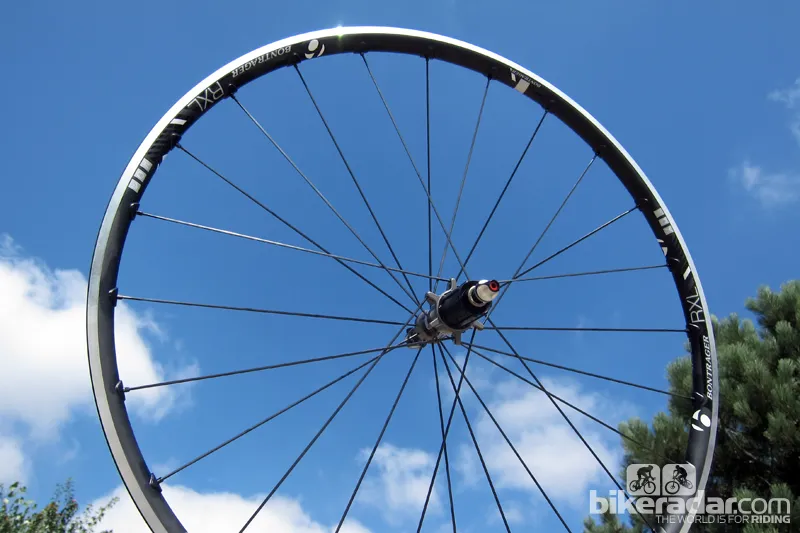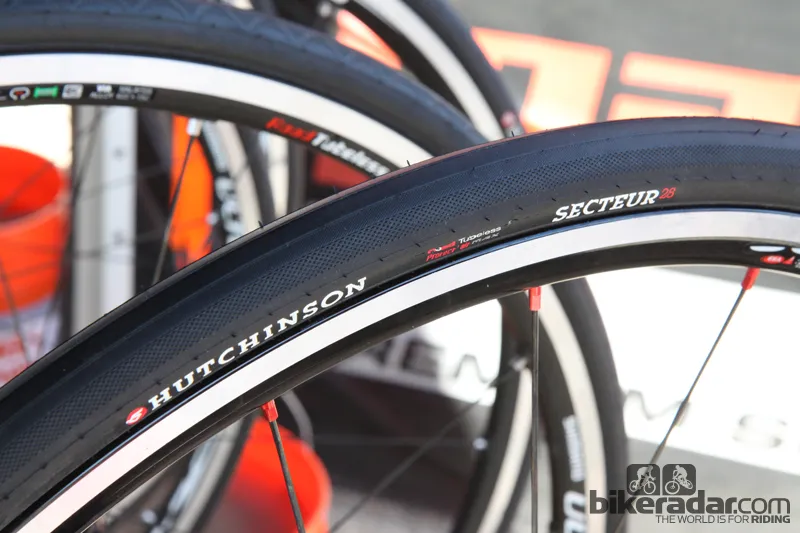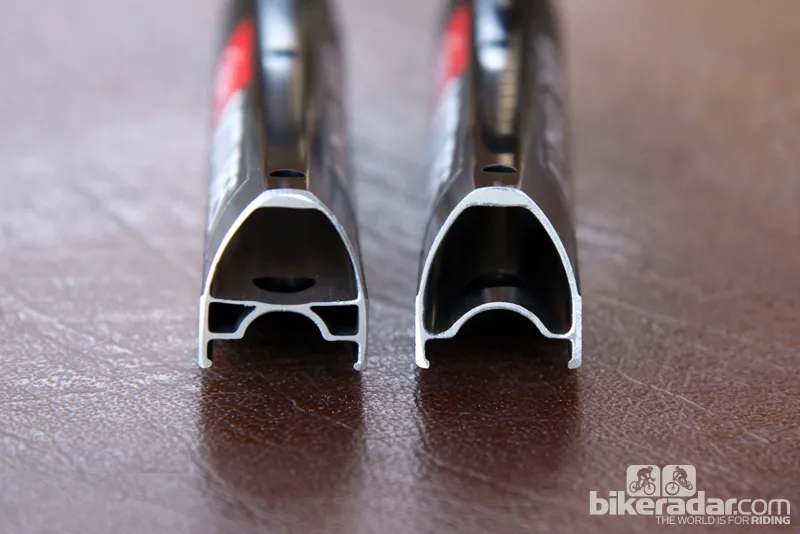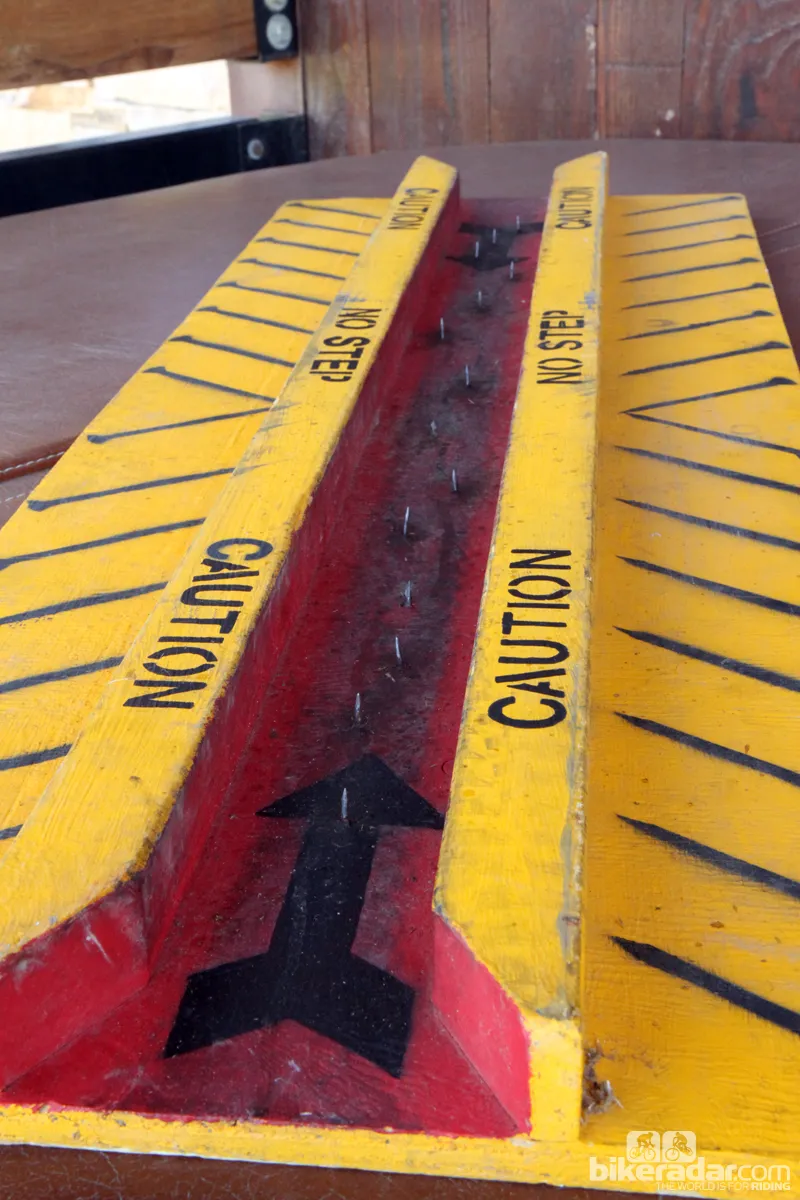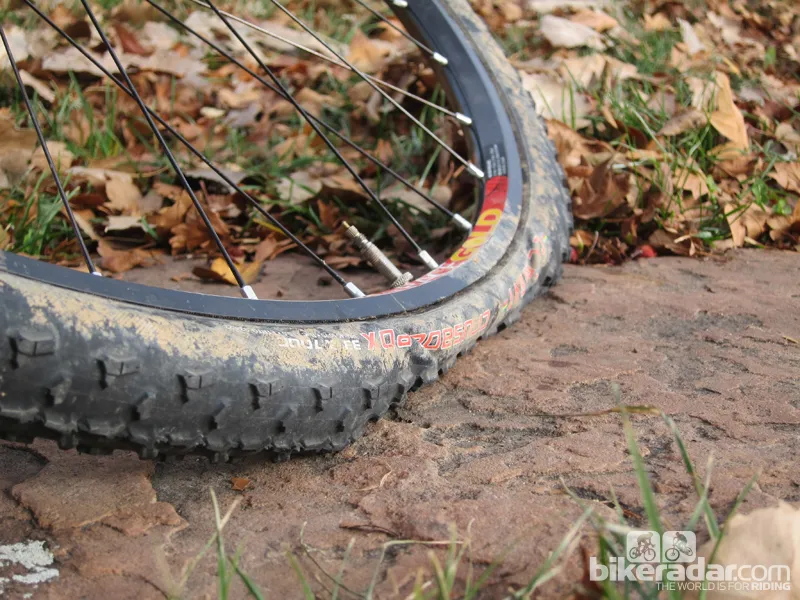Inner tubes are notably rare on other high-performance vehicles, so why are we still using them on bicycles? While they're not always the easiest to set up, I can't think of many good reasons why most riders shouldn't go tubeless.
One of the biggest advantages of tubeless setups over conventional clinchers is their resistance to both pinch flats and punctures – a big fear for new riders and a universal pain for everyone. Not having a tube inside means there's no tube to split open when crushed between the tire casing and rim on a pothole.
With a little bit of sealant inside, small punctures often self-seal before they become an issue. Even without, though, proper tubeless tires with bead-to-bead rubber coatings inside the casing will sometimes lose air so slowly with small punctures that you won't even notice it until the next day. And if all else fails while you're out on the road or trail, you can just stick in a tube as you normally would.
As there's less chance of a pinch flat, tubeless setups allow for lower pressures for better traction and a smoother ride. This is especially beneficial to mountain bikes but it goes for road bikes, too, meaning that it's genuinely possible to get better durability and greater safety combined with more speed.

Tubeless AND aero? Why not, says Easton with its new EC90 Aero 55
Component availability has improved significantly in the past few years. More companies than ever are offering compatible wheels and should you prefer, you can still run them with tube-type tires just as you would with other wheels so the only things you're losing are limitations. Tubeless-compatible wheels built with solid, airtight outer rim walls also tend to be stiffer and stronger than ones with a bunch of holes drilled in them. Plus, they don't require rim strips, either – another win/win.
Easton's new EC90 Aero 55 carbon tubeless-compatible clinchers, for example, boast a slippery 55mm rim depth, a wide profile for extra casing support, and enviable stiffness – all in a package weighing just 1,580g per pair (claimed).
Tire selection was once a key limiting factor but that's improved significantly in recent years, even on the road where we're seeing more companies entering the fold. There has also been a big jump in available sizes and in more demanding enduro applications with heavily reinforced casings and very aggressive tread designs. More manufacturers are offering lighter and smoother-riding tubeless-ready options, too, which are built with airtight beads but standard casings. These require some sealant to be airtight but they're generally lighter and roll faster.
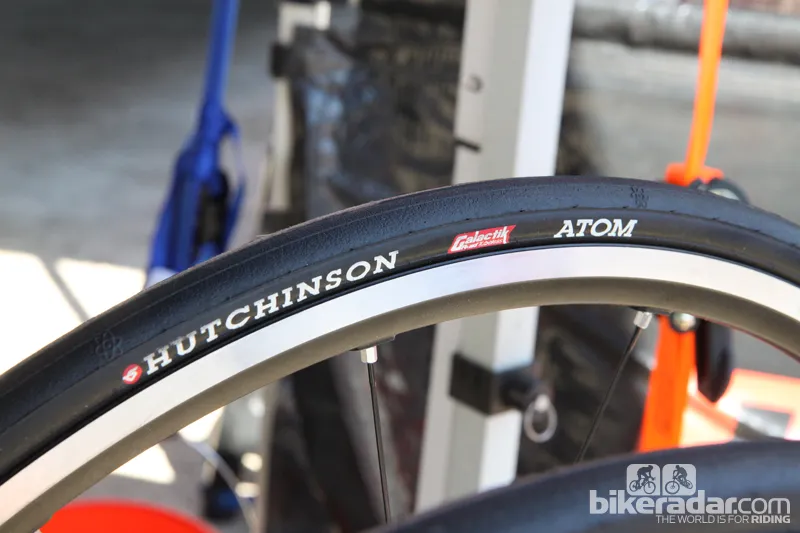
The new Hutchinson Atom Galactik weighs a claimed 240g
For example, Hutchinson recently unveiled a lightweight tubeless-ready road option called the Atom Galactik that weighs just 240g in a 700x23c size while Bontrager's new tubeless-ready SE4 Team Edition enduro-specific tires are still a reasonable 941g in a 26x2.35in size despite promising outstanding toughness.
Granted, it's not quite all roses when it comes to tubeless. Proper UST and Road Tubeless combos are generally heavier than their equivalent tube-type brethren and their thick butyl tire linings can add rolling resistance as compared to tires with thinner casings. Riders who frequently change treads and ride in regions where flats are rare are justified in sticking with tubes. In that case, the upsides of tubeless might not outweigh the increased hassle. Likewise, road riders on clinchers who prioritize light weight will likely still do better on the scale with a standard high-end tire and latex tubes.
The biggest obstacle to widespread acceptance of tubeless, however, continues to be convenience. While you can easily swap a tubed tire in less than five minutes, stubborn tubeless tires can take far longer and sometimes require a compressor to properly seat the bead. Then there's the messiness of sealant — especially if you blow a tire off the rim.
I'd argue, however, that those issues have more to do with individual manufacturer issues and ill-advised, cobbled-together conversions that often start out with a sloppy fit between the rim and tire. I've generally had very good luck inflating proper UST and proper Road Tubeless tires on matching rims with a high-volume floor pump. Adding some soapy water on the bead and removing the valve core for greater airflow helps a lot.
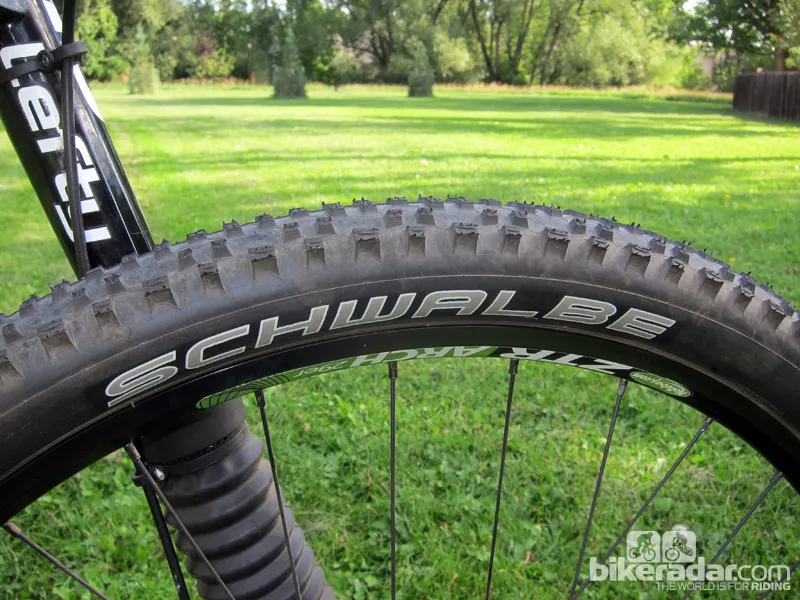
As the name suggests, Stan's NoTubes was an early tubeless pioneer, and the company's rims are still a good option
Even conversions have posed few challenges provided you've got a good fit to start with – the key to a reliable tubeless setup. After making the switch more than ten years ago, I've yet to suffer a catastrophic tubeless-related failure (knock on wood) even during last year's cyclocross season where I was regularly running a converted setup at around 22psi.
Alternatively, wheel companies such as Stan's NoTubes, Sun-Ringlé (who licenses the NoTubes ZTR rim design), and American Classic have advanced the issue by using very slightly oversized rim diameters that create a tighter interface between the tire and rim. Deeper central rim channels mean it's usually still pretty easy to install a tire, too, but yet it's easier to inflate and safer to use in the long run.
Still uconvinced? Fair enough, but I'd suggest you at least try a tubeless setup if possible when you're shopping for your next wheelset. Decide against it for one of the reasons above but don't pass it over for a tube-type setup just because that's what you've always done. Sometimes you have to first step out of your comfort zone to take a leap forward.
James Huang has been writing about bicycle tech since 2005 but also has more than 14 years of experience as a shop mechanic. Over the years he's seen plenty of fantastic gear and technology but also a lot of things that just flat-out piss him off. Follow the 'AngryAsian' on Twitter at @angryasian.
